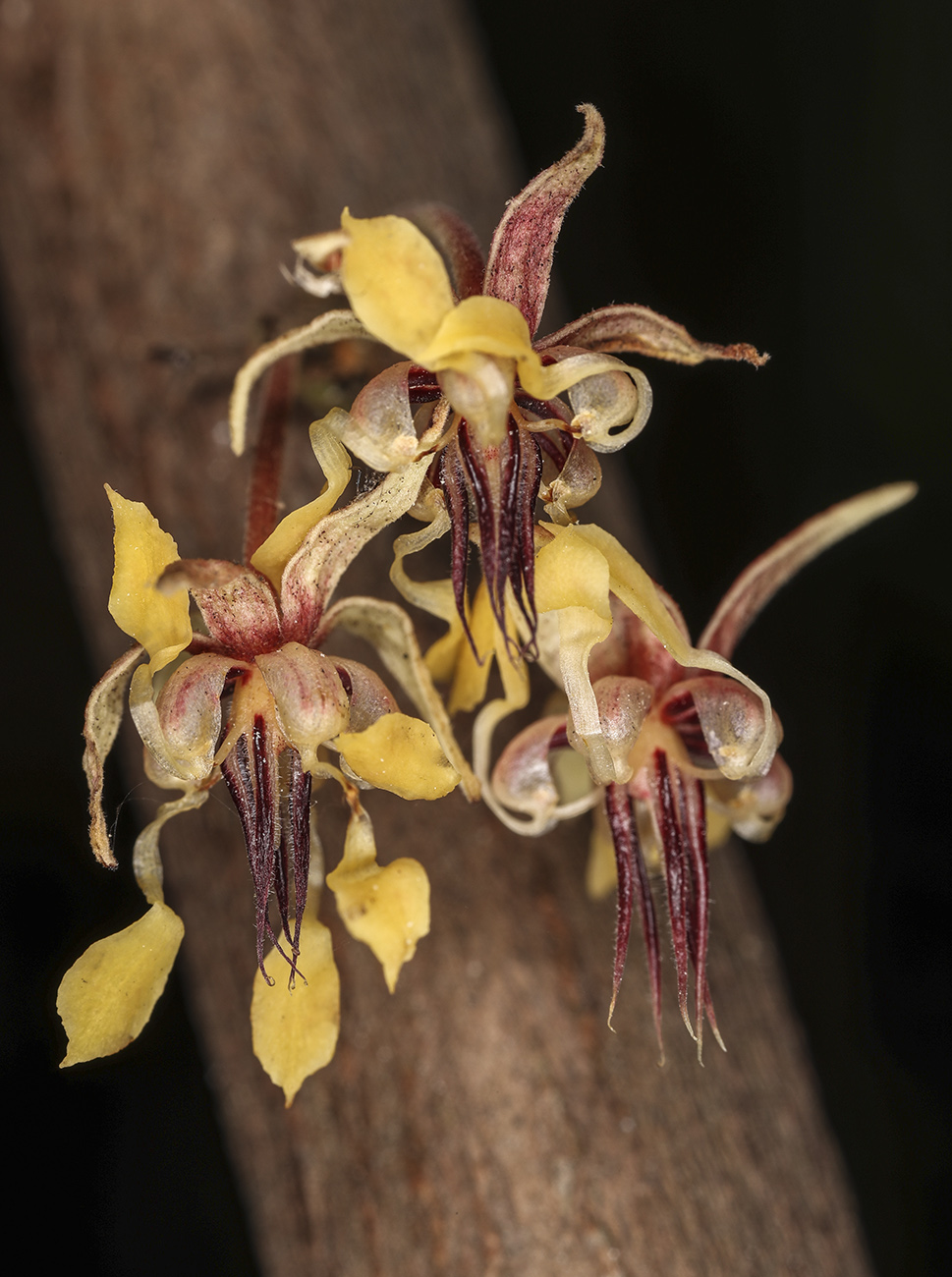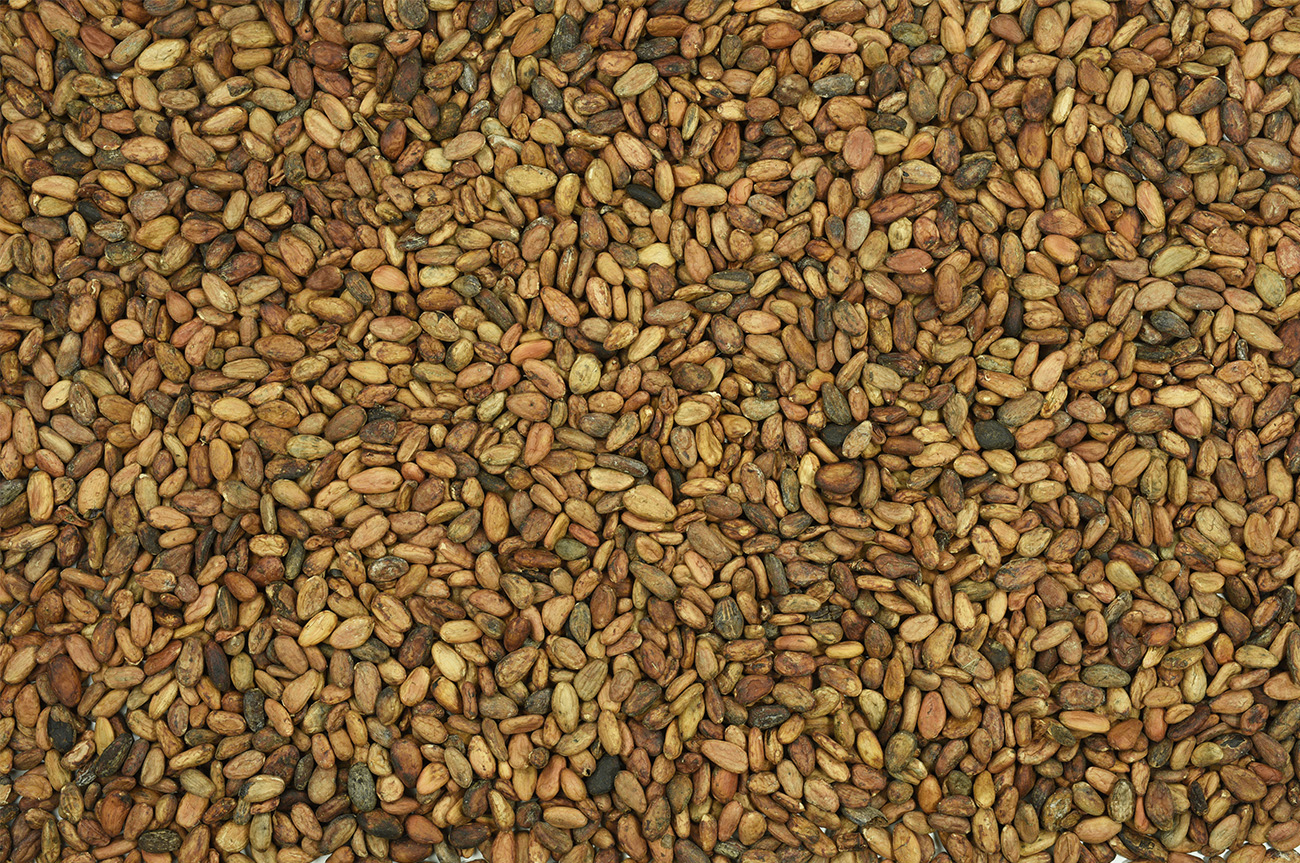Cacao is a small evergreen tree in the family Malvaceae. Its seeds, commonly named cocoa beans, are used to make chocolate, cocoa butter, cocoa solids, and chocolate liquor. The cacao tree was an important aspect of Mesoamerican civilizations´ customs and beliefs. Especially for the Mayan societies that utilized cacao for ritualistic purposes. Evidence suggests that cacao was an integral part of their society as it was embedded in their religious beliefs. Understanding these uses and origins of cacao illustrates the reasons chocolate is represented as a luxurious item today. This representation in the Mayan religion and culture established cacao as a powerful entity that shaped the ways that it was utilized.

Theobroma cacao fruit. FLAAR Ethnobotanical garden. Erick Flores, 2018
What is cacao?
Cacao is the common name we give to the plants of the genus Theobroma which is a genus of flowering plants in the Malvaceae family, and its name is derived from the Greek for “food of the gods”. The cacao tree originated in the Amazon basin, but it acclimatized in Mesoamerica, the vast region formed by Central America and Mexico. There it was domesticated and manipulated until achieved a variety known as criolla, with a more delicate flavor and less bitter than South American cacao. There are at least 22 species of cacao in America, and most of them habits in the north of the Amazon, Orinoco River, between Venezuela, Colombia, Ecuador, and a part of Brazil.
In Mesoamerica, there are only two species. Theobroma cacao is the best-known species of the genus. The seeds are used for making chocolate. This species is widely distributed from southeastern México to the Amazon basin. However, there is another important species of cacao varieties called Theobroma bicolor which is commonly known as balamté or pataxte, jaguar tree, mocambo tree, and pataxte. It is found in Central and South America, including stretches of the Amazon Forest.
The cacao tree needs very specific conditions to grow. It only occurs in tropical areas with temperatures above 18°C and altitudes below 1,250 meters. It also requires shady areas. In Mesoamerican, it only prospered in Chiapas and Tabasco (two Mexican States) and in Guatemala. Its fruits take between four and six months to mature, and, after collecting them, they must be opened by hand to remove the cacao beans. It is collected by shaking, hitting the top of the tree with a long stick to make the fruits fall to the ground.

Theobroma cacao flower. FLAAR Ethnobotanical garden. Erick Flores, 2018
Cacao was a luxury product in Mesoamerican society
Both for growing in a small area and the complexity of its handling, cacao became a luxury product in Mesoamerican society. It began to acquire relevance in the Classic period (150-900 AD), especially among the Mayans, who considered it sacred in any of its forms. In the artistic manifestations of its culture, cacao appears represented in all kinds of supports such as vessels, reliefs, or codices, and always with the presence of high-ranking figures performing important ceremonies. The abundance of representations in the Mayan lands should not surprise us, because it is precisely in that region where the cacao tree grew.
Cacao was part of the pre-Hispanic ritual at least since the Classic period. Sometimes it assumed the role of a cosmic tree, associated with the south and therefore with the underworld, perhaps because it needed shade to grow. In this way, its symbolism arose in opposition to another of the main crops, maize. This represented light and life, compared to cacao, which was associated with darkness and death. It was also related to the jaguar, which acted as a protector, from where the common name T. bicolor is derived.
Ritualistic and cultural purposes of the cacao Mayan civilizations
It is commonly known that Mayan societies utilized cacao for ritualistic purposes. Evidence suggests that cacao was an integral part of their society as it was embedded in their religious beliefs. We must understand that these historical uses and origins of cacao are one of the reasons chocolate is represented as a luxurious item today. The association of cacao with godly figures derives from its origin. According to Mayan religious beliefs, their gods discovered cacao. One example is Ek Chuah, who was supposedly honored by the Maya in the annual festival. He was an important deity and commonly presented with cacao or a cacao tree.
The strong connection between cacao and the gods established chocolate as a mystical and highly valued substance. There are records from the Mayan society, written in hieroglyphics that reveal the significance of cacao in Mayan rituals. One of the records is presented in “Popol Vuh” where it is mentioned that cacao is present in combination with godly rituals. That cacao was used by the divine qualifies chocolate as a divine entity as well. Labeling chocolate as “food of the gods” implies that cacao is a substance worthy to unworldly beings, which has resulted in mystical and pure connotations being attached to cacao.
Above all, cacao was linked to blood and sacrifice because of its shape and color; the appearance of the fruit was reminiscent of the heart, which inside keeps the precious liquid. Sometimes, achiote was added to the cocoa drink, giving it the appearance of blood. In some rituals, cocoa was prepared with the water used to wash the knives used in sacrifices. It was also present in social ceremonies. At weddings, the spouses shared a cacao gourd as a symbol of the union of their blood, that is, for their lineages. Likewise, cocoa was a part of the grave goods, probably with the mission of feeding the deceased on their journey through the underworld.

Theobroma cacao fruit. Senahú, Alta Verapaz. David Arrivillaga, 2020
A coin in America
It may seem strange that more than a thousand kilometers from the Mayan area, in central Mexico, there are representations of cacao in the heart of the most important capital of its time: Teotihuacán, located in an area where the required climatic conditions did not exist. In Teotihuacan cacao was imported from the producing regions. Archeological investigations confirm the close relations that existed between this city and the Mayans and show that long-distance trade was in full swing. Cacao became one of the products associated with wealth, along with skins, goods that the Mexican elite demanded from the tropics, both for their private consumption and for ritual ceremonies.
Medicinal and other uses of cacao
The medicinal and cosmetic uses of cacao were also endless. The oil that was extracted from the seed was used as a flavoring, and with the cacao butter that was obtained from the fat of the seeds, ointments were prepared to treat ailments as diverse as dry skin, burns, breasts of women in labor, and hemorrhoids. As a drink, it was not only delicious and refreshing, but depending on the condiments, it was energetic, aphrodisiac, or hallucinogenic. Some scientific studies stated that cacao contains a chemical called “theobromine” which is an alkaloid that stimulates the production of endorphins, a substance that produces happiness. For this reason, some people use it as an antidepressant.

Theobroma cacao seeds. Nicholas Hellmuth, 2019.
Bibliography
- 2000
- Food of the Gods: Cure for Humanity? A cultural history of the Medicinal and Ritual Use of Chocolate. The American Society for Nutritional Sciences. Vol. 130, Pages 2057-72.
- 2007
- The History of the word for cacao in ancient Mesoamerica. Ancient Mesoamerica. Vol. 18, Pages 193 – 237.
- 2017
- Spouted Vessels and Cacao Use among the Preclassic Maya. Latin America Antiquity. Vol. 13, No. 1, Pages 85-106. doi:10.2307/971742
- 2008
- Cacao use in Yucatan among the Pre-Hispanic Maya. In Louis E. Grivetti and Howard-Yana Shapiro (Editors) “The role of Cacao in the Northern Maya Area”. Chocolate: History, Culture and Heritage. Pages 3 – 15. doi:10.1002/9780470411315.CH1.
- 2009
- Cacao in Ancient Maya Religion. In: Diane and Arlen Chase (editors) “Chocolate in Mesoamerica: A Cultural History of Cacao”. Pages 154 – 183 doi:10.5744/florida/9780813029535.003.0008
Written by Flor Morales

